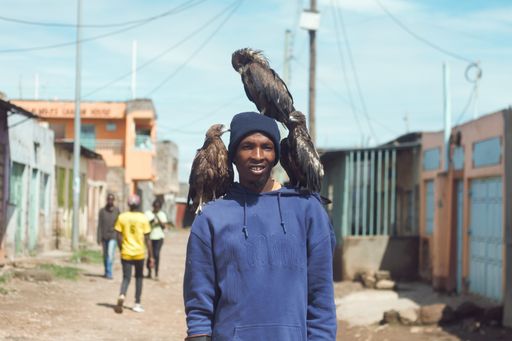Twice a year, the tiny Red Knot embarks on an extraordinary 16,000km journey between Siberia and the western African coast, more than the distance of the world's longest commercial nonstop flight (15,349km) between New York and Singapore.
This 140gm migratory bird's flight remains one of nature's most astonishing feats of endurance, achieved by a creature barely larger than an adult palm, without the twin engines of a jumbo plane.
But this epic migration, along with billions of other bird journeys across the African-Eurasian flyway, faces an escalating crisis.
The world has lost 22% of its wetlands since the 1970s, equivalent to more than half a billion football pitches.
As wildlife experts gathered in Zimbabwe's Victoria Falls National Park for the 15th Conference of the Contracting Parties to the Convention on Wetlands (COP15) from July 23 to 31, they confronted a worrying reality outlined in the Global Wetland Outlook 2025.
At least 400 million hectares of wetlands have vanished since 1970, with nearly a quarter of those remaining in degraded condition.
Avian superhighway
The African-Eurasian flyway represents one of eight major global routes that birds follow as part of their nature, linking habitats across Africa, Europe and Asia.
According to the African Wildlife Foundation, the red knot shorebird travels such a long distance to breed in Siberia and winter on Africa's western coasts.
The 10gm Willow Warbler flies twice a year between northeast Siberia and Southern Africa, entailing a journey of 11,300km one-way. The White Stork, too, returns annually to the same nest along this route.
Three distinct categories make up the migratory travel caravan – waterbirds such as pelicans, herons, storks, flamingos, and even African penguins; landbirds like the black-bellied bustard that is common in Kenya's Maasai Mara, and the helmeted guinea fowl found in the Sahara.
The travellers also include raptors – birds of prey like vultures, eagles, hawks and falcons that sit atop the food chain.
More than 100 migratory bird species have been recorded in southern Africa alone, with 35 intra-African migrant species documented in South Africa.
Yet, according to BirdLife International, a global partnership of non-governmental organisations working to conserve birds and their habitats, "the birds on this flyway are some of the most persecuted on the planet, with at least 10% threatened with extinction".
Pit stops in peril
Wetlands, which account for 6% of Earth's surface, support 40% of global biodiversity and the livelihoods of four billion people worldwide.
"For billions of migratory birds, wetlands are vital stopovers, providing places to feed and breed during their long and arduous migrations," Martin Harper, chief executive officer of BirdLife International, tells TRT Afrika.
Their degradation stems from multiple sources: climate change reducing water levels, human activities such as illegal dumping and settlement, pollution, and the disappearance of wetland vegetation.
"When we lose a wetland, we break a link in the chain that holds life together – from the Bar-tailed Godwit in flight to the people who depend on wetlands for water, food, and protection. The world cannot afford to let that chain collapse," Dr Musonda Mumba, secretary general of the Ramsar Convention, tells TRT Afrika.
Call to action
The Zimbabwe conference marked only the second time a COP of the Convention on Wetlands was held in Africa and the first in Zimbabwe.
It was befitting that Victoria Falls National Park, a designated Wetland of International Importance, provided the backdrop.
Forty-eight African countries are among the 172 Parties to the Ramsar Convention, the global pact to protect wetlands signed in 1971 in Ramsar, Iran.

"This is an opportunity to raise ambition and double down on existing political commitments to protect our wetlands," explains Dr Mumba.
"This includes among other things, adoption of the Convention's Fifth Strategic Plan (2025-2034) to guide use of wetlands, integrate wetlands conservation into national plans, and bridge the financing gap to support conservation."
Funding challenge
Despite wetlands contributing an estimated US $39 trillion in benefits annually, conservation funding remains critically insufficient.
Based on various estimates by conservationists, the annual funding gap stands at $700 billion, with conservation accounting for just 0.25% of global GDP.
"World leaders have pledged to close this gap, and some countries are stepping up. Others can join them," Harper tells TRT Afrika.
He suggests innovative financing mechanisms, including debt-for-nature swaps through which debt relief is provided in exchange for wetlands conservation commitments. The other options are green and blue bonds, carbon markets, Payments for Ecosystem Services schemes, and biodiversity credits.
As agricultural expansion, pollution, urbanisation, industrial development and climate change continue driving wetland loss, the fate of billions of migratory birds hangs in the balance.
The Willow Warbler's epic transcontinental journey is no longer just something to marvel at. The bird's survival now depends on the preservation of the wetlands that connect the dots along its flyway.



















